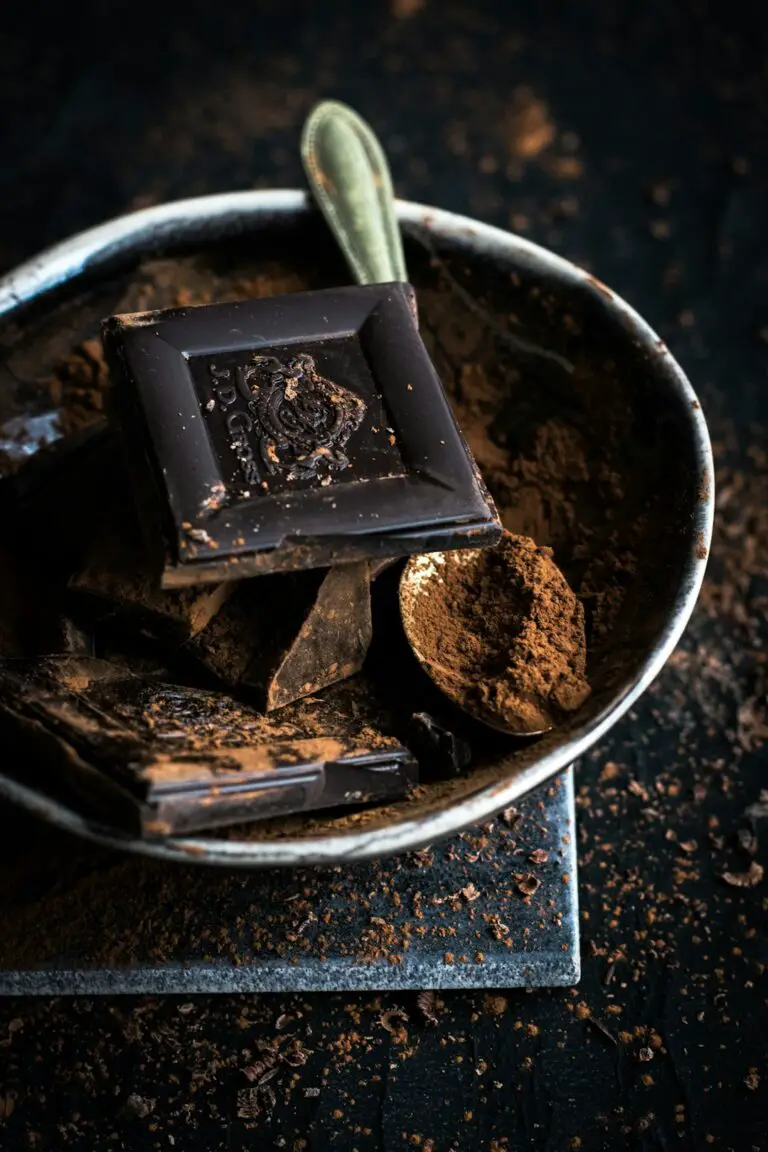Support our educational content for free when you purchase through links on our site. Learn more
Does All Chocolate Have Heavy Metals? Unwrapping the Truth (2025) 🍫
You’ve probably heard whispers—and maybe even alarming headlines—about heavy metals lurking in your favorite chocolate bars. Is every bite of that luscious dark chocolate a hidden risk? Or is the danger overblown? As expert tasters at Chocolate Brands™, we’ve dug deep into the science, consumer insights, and multi-year studies to bring you the definitive answer on whether all chocolate contains heavy metals, how much is too much, and which brands are leading the way toward safer indulgence.
Spoiler alert: not all chocolate is created equal when it comes to heavy metals. From the volcanic soils where cacao grows to the drying racks where beans are processed, the journey of lead and cadmium into chocolate is complex—and surprisingly fixable. Later, we’ll reveal which popular brands have tested high, which ones you can trust, and practical tips to enjoy chocolate without worry. Ready to savor your next bar with confidence? Let’s unwrap the facts.
Key Takeaways
- All chocolate contains trace amounts of heavy metals like lead and cadmium, but levels vary widely by brand and cacao percentage.
- Dark chocolate generally has higher heavy metal levels due to its higher cocoa solids content.
- Lead contamination mostly occurs post-harvest, while cadmium is absorbed from the soil by cacao plants.
- Organic certification does not guarantee lower heavy metal content; some organic chocolates have higher cadmium levels.
- Moderation and brand choice are key: enjoy chocolate responsibly by selecting brands with transparent testing and lower heavy metal levels.
- Brands like Mast, Taza, and Ghirardelli’s Intense Dark bars consistently show lower heavy metal concentrations.
- Industry trends show a promising decline in heavy metal levels over recent years, thanks to improved farming and processing practices.
Craving safer chocolate? Explore our expert reviews and brand comparisons to find your next guilt-free indulgence!
Table of Contents
- ⚡️ Quick Tips and Facts About Heavy Metals in Chocolate
- 🍫 The Bitter Truth: How Heavy Metals Get Into Your Chocolate
- 🧐 Heavy Metals in Chocolate: What Does Science Say?
- 1️⃣ Top 10 Heavy Metals Found in Chocolate and Their Sources
- 2️⃣ How Different Types of Chocolate Compare: Dark, Milk, and White
- 3️⃣ The Health Impact: Are Heavy Metals in Chocolate Dangerous?
- 4️⃣ Regulatory Standards and Safety Limits for Heavy Metals in Chocolate
- 5️⃣ How to Choose Chocolate Brands with Lower Heavy Metal Levels
- 6️⃣ Consumer Insights: What Chocolate Lovers Are Saying About Heavy Metals
- 7️⃣ The Role of Sustainable and Organic Farming in Reducing Heavy Metals
- 8️⃣ Testing Methods: How Experts Detect Heavy Metals in Chocolate
- 9️⃣ Myths vs. Facts: Debunking Heavy Metal Chocolate Rumors
- 🔍 Spotlight on Leading Chocolate Brands and Their Heavy Metal Reports
- 🛡️ Tips for Minimizing Heavy Metal Exposure When Enjoying Chocolate
- 📊 Heavy Metals in Chocolate: A Multi-Year Analysis and Trends
- 🍫 The Bottom Line: Should You Worry About Heavy Metals in Chocolate?
- 📚 Recommended Links for Further Reading on Chocolate Safety
- 🔗 Reference Links and Scientific Studies on Heavy Metals in Chocolate
The Ultimate Guide to Heavy Metals in Chocolate
Welcome, fellow chocolate aficionados! We’re the expert tasting team at Chocolate Brands™, and if there’s one thing we know, it’s the magical world of cacao. We’ve journeyed from the lush plantations of Latin America to the finest chocolatiers in Europe, all in the name of understanding our favorite treat. But lately, a shadow has fallen over this delectable world—a whisper of “heavy metals.” You’ve probably heard the buzz and are wondering, “Does all chocolate have heavy metals?”
Let’s be honest, seeing headlines with “chocolate” and “toxic metals” in the same sentence is enough to make any dessert lover’s heart skip a beat. But before you banish your beloved bars to the back of the pantry, let’s unwrap this mystery together. We’re here to give you the straight scoop, blending our hands-on experience with hard science to help you navigate the chocolate aisle with confidence. Ready to dive in?
⚡️ Quick Tips and Facts About Heavy Metals in Chocolate
In a rush? Here’s the essential download on what you need to know.
- ✅ Yes, heavy metals are present. Virtually all chocolate and cocoa products contain some level of lead and cadmium. But don’t panic! These elements are also naturally found in other healthy foods like spinach, carrots, and sweet potatoes.
- Looking for the safest options? Our team is constantly researching and tasting to bring you the best recommendations for chocolate without heavy metals.
- 🍫 Dark chocolate tends to have higher levels. Why? Because it contains a higher percentage of cocoa solids, which is where the metals accumulate. Milk chocolate generally has lower levels because it has fewer cocoa solids.
- Lead (Pb) and Cadmium (Cd) are the two main culprits of concern.
- 🌱 “Organic” doesn’t mean “heavy metal-free.” This is a big one! A recent multi-year study found that organic-certified chocolates were, surprisingly, associated with higher levels of cadmium.
- 🌍 Source matters. Cadmium is primarily absorbed by the cacao plant from the soil, while lead contamination often happens after the harvest, during drying and processing.
- ⚖️ Moderation is your best friend. For the average person, enjoying chocolate in moderation is unlikely to pose a significant risk. The concern is more about cumulative exposure over time.
🍫 The Bitter Truth: How Heavy Metals Get Into Your Chocolate
Ever wonder how these unwelcome guests crash the chocolate party? It’s not like chocolatiers are sprinkling them in for flavor! The journey of heavy metals into your chocolate bar is a fascinating, albeit concerning, tale of nature and nurture. It’s a story that begins deep in the earth and continues all the way to the factory.
From the Soil to the Bean
Think of the cacao tree as a product of its environment. Just as it soaks up the sun and rain, it also draws minerals and other elements from the soil through its roots.
- Cadmium (Cd): This metal is the ultimate stowaway. It’s naturally present in soil all over the world, especially in volcanic regions where many cacao trees thrive. The cacao plant absorbs cadmium from the soil, and it accumulates in the cacao beans—the very heart of chocolate. So, the higher the cadmium in the soil, the higher it’s likely to be in the beans. This is a key part of Chocolate History and Origins.
Post-Harvest Predicaments
The story doesn’t end once the cacao pods are picked. Some contaminants join the party much later in the process.
- Lead (Pb): Unlike cadmium, lead is more of an uninvited guest that shows up after the harvest. Research suggests that lead contamination happens when the beans are being dried and fermented. Often, beans are laid out in the open to dry in the sun. During this time, dust and dirt from the surrounding environment, which can contain lead from historical pollution (like leaded gasoline), can settle on the sticky outer shells of the beans.
This crucial difference means that tackling lead and cadmium requires two very different strategies from farmers and chocolate makers.
🧐 Heavy Metals in Chocolate: What Does Science Say?
Here at Chocolate Brands™, we love the romance of chocolate, but we also respect the science. A groundbreaking multi-year study published in Frontiers in Nutrition analyzed 72 popular cocoa products in the US between 2014 and 2022, and its findings are eye-opening.
The study measured lead (Pb), cadmium (Cd), and arsenic (As) against the safety standards set by California’s Proposition 65, which has some of the most stringent limits in the world.
Here’s a snapshot of what they found:
| Heavy Metal | Prop 65 Daily Limit (MADL) | Percentage of Products Exceeding Limit | Key Finding |
|---|---|---|---|
| Lead (Pb) | 0.5 mcg/day | 43% | “There has never been a safe serum level of Pb consumption identified.” |
| Cadmium (Cd) | 4.1 mcg/day | 35% | “Cd levels are associated with cardiovascular disease, kidney dysfunction, cognitive deficit…” |
| Arsenic (As) | 10 mcg/day | 0% | All products tested were well below the safety limit for arsenic. |
While 43% of products exceeding the lead limit sounds alarming, it’s important to note that 97.2% of the products fell below the US FDA’s interim reference levels for lead. This highlights a key conflict in the data: the risk level depends heavily on which safety standard you use. California’s Prop 65 is exceptionally cautious, while the FDA’s guidelines are less strict.
The study concludes that while a single serving of most products may not pose a risk for the average person, “consuming more than one serving per day and/or in combination w other sources of heavy metals…may cumulatively add up to exposure that exceed the Prop 65 MADLs.” This underscores the importance of considering your entire diet when thinking about the Chocolate Health Benefits.
1️⃣ Top Heavy Metals Found in Chocolate and Their Sources
While many elements can be present in trace amounts, the science and regulatory focus are squarely on two primary metals. Let’s break them down.
-
1. Lead (Pb)
- Primary Source: Post-harvest contamination. Lead-contaminated dust and soil settle on the cacao beans as they dry in the open air. Proximity to roads, industrial sites, and use of leaded gasoline in equipment can increase the risk.
- Why the Concern? There is no known safe level of lead exposure, especially for children and pregnant women. It’s a neurotoxin linked to developmental issues, learning disabilities, and a lower IQ. In adults, chronic exposure can lead to kidney damage and nervous system problems.
-
2. Cadmium (Cd)
- Primary Source: Soil absorption. The cacao tree naturally absorbs cadmium from the soil, where it’s often present due to volcanic activity and rock weathering.
- Why the Concern? Cadmium is a known carcinogen and can accumulate in the body over time, particularly in the kidneys. Long-term exposure is linked to kidney disease, bone damage, and cardiovascular issues.
While arsenic and mercury are also heavy metals, studies consistently show that the levels in chocolate are very low and not considered a primary concern.
2️⃣ How Different Types of Chocolate Compare: Dark, Milk, and White
Is your favorite type of chocolate a bigger offender? Yes, the type of chocolate you choose makes a significant difference. As a general rule, the higher the cacao percentage, the higher the potential for heavy metals.
Here’s how they stack up in our Chocolate Brand Comparisons:
| Chocolate Type | Typical Cacao % | Heavy Metal Risk | Why? |
|---|---|---|---|
| Dark Chocolate | 50% – 100% | Higher ⚠️ | Heavy metals are concentrated in the cocoa solids (the non-fatty part of the bean). Dark chocolate has the most cocoa solids. |
| Milk Chocolate | 10% – 50% | Lower ✅ | Contains fewer cocoa solids and more milk, sugar, and cocoa butter, which dilutes the concentration of metals. |
| White Chocolate | 0% | Lowest ✅ | Contains no cocoa solids at all! It’s made from cocoa butter, sugar, and milk, so it’s not a significant source of this type of contamination. |
So, if you’re a die-hard dark chocolate fan, does this mean you have to give it up? Not at all! It just means being a more discerning consumer. And if you’re looking for specific recommendations, our Chocolate Bar Reviews are a great place to start.
3️⃣ The Health Impact: Are Heavy Metals in Chocolate Dangerous?
This is the million-dollar question, isn’t it? The answer is nuanced: it depends on the amount, the frequency of consumption, and your individual vulnerability.
Heavy metals are not something to be taken lightly. They are systemic toxicants, meaning they can cause damage across various body systems.
- Lead (Pb): The U.S. Centers for Disease Control (CDC) states that no safe blood lead level in children has been identified. Even low levels can cause neurological impairment and learning disabilities.
- Cadmium (Cd): The International Agency for Research on Cancer classifies cadmium as a human carcinogen. Chronic exposure, even at low levels, can damage the kidneys and cause bones to become brittle.
However, it’s crucial to maintain perspective. The FDA has stated that “chocolate is a minor source of exposure to these contaminants internationally.” The risk comes from cumulative exposure from all dietary sources. Your body accumulates these metals over time, so what matters is your total intake, not just the amount from a single square of chocolate.
For most adults who enjoy chocolate as an occasional treat, the risk is low. The concern is higher for:
- Children and pregnant women, who are more vulnerable to the neurotoxic effects of lead.
- Individuals who consume large quantities of dark chocolate daily.
4️⃣ Regulatory Standards and Safety Limits for Heavy Metals in Chocolate
Navigating the world of safety regulations can be confusing because different agencies have different standards. There is currently no federal limit set by the FDA specifically for lead and cadmium in chocolate. However, the FDA does have action levels for some foods, particularly those for children.
The most frequently cited standard comes from California.
| Regulatory Body | Standard Name | Lead Limit | Cadmium Limit | Note |
|---|---|---|---|---|
| California | Proposition 65 (MADL) | 0.5 mcg/day | 4.1 mcg/day | This is the strictest standard and is often used by consumer groups for testing. |
| U.S. FDA | Interim Reference Level (IRL) | 2.2 mcg/day (children) / 8.8 mcg/day (women) | No specific limit for food | The FDA uses IRLs to assess potential health concerns. |
| European Union | Commission Regulation | Varies by cacao % | 0.1 – 0.8 ppm | The EU has specific limits based on the type of chocolate product. |
The lack of a unified federal standard in the U.S. is why you see so many headlines referencing California’s Proposition 65. It’s the benchmark that consumer advocates use to hold companies accountable.
5️⃣ How to Choose Chocolate Brands with Lower Heavy Metal Levels
So, how can a savvy chocolate lover make safer choices? It’s tricky, but not impossible!
❌ Don’t rely on the “organic” label. This was one of the most shocking findings from recent research. The multi-year study in Frontiers in Nutrition found that products labeled “organic” were actually associated with higher concentrations of cadmium. This is likely because the source of cadmium is the soil itself, and organic farming practices don’t necessarily address soil contamination.
✅ Check reports from consumer testing groups. Organizations like Consumer Reports have conducted extensive testing on various chocolate products, naming specific brands with higher and lower levels of lead and cadmium. This is currently the most reliable way for consumers to get information.
✅ Look for brands that are transparent. Some brands are taking this issue seriously and are conducting their own third-party testing. Brands like Raaka and Fortunato even publish their test results online, which is a huge step in the right direction.
✅ Consider brands identified as “safer choices.” In various tests, some brands have consistently shown lower levels of heavy metals. These include:
- Mast Organic Dark Chocolate
- Taza Organic Chocolate
- Ghirardelli Intense Dark Chocolate (specifically the 86% and 72% cacao bars)
As Dr. Michael Greger advises in the featured video, for those who consume cocoa daily, it’s wise to “really should try to get low toxic cocoa.” He even notes that consumer testing found the Target generic brand cocoa to be one of the lowest in contaminants.
6️⃣ Consumer Insights: What Chocolate Lovers Are Saying About Heavy Metals
As your dedicated team at Chocolate Brands™, we’re always listening to the conversation among chocoholics. The overwhelming sentiment? Confusion and concern.
For years, we’ve been told about the amazing health benefits of dark chocolate—it’s packed with flavanols that are great for heart health and blood flow! The video summary mentions a study where high-flavanol cocoa “doubled the number of stem cells” in patients with coronary artery disease. That’s incredible!
But now, consumers are caught in a frustrating paradox: the very chocolate that’s supposed to be good for you might also carry a hidden risk. This has led to a flood of questions on forums and social media:
- “Do I have to give up my favorite treat?”
- “Which brands can I trust?”
- “Is the health benefit worth the potential risk?”
This uncertainty is why we believe in providing clear, balanced information. It’s not about fear-mongering; it’s about empowering you to make informed choices that fit your lifestyle and risk tolerance.
7️⃣ The Role of Sustainable and Organic Farming in Reducing Heavy Metals
You’d think that “organic” or “fair trade” certifications would be a silver bullet for this problem, but the reality is more complex. As we’ve mentioned, studies have shown that organic certification doesn’t guarantee lower heavy metal levels and can sometimes mean the opposite.
So, what can make a difference?
- For Cadmium: The solution lies in the soil. This involves agricultural science—finding ways to amend the soil with materials like lime or zinc to reduce the acidity, which can decrease the cacao plant’s uptake of cadmium. It also involves careful sourcing, identifying growing regions and specific farms with naturally lower levels of cadmium in the soil.
- For Lead: The solution is all about post-harvest practices. Since lead contamination primarily comes from dust settling on the beans, improvements can make a huge impact.
- ✅ Using raised drying tables instead of drying beans on the ground.
- ✅ Implementing better cleaning and winnowing (de-shelling) processes to remove contaminated shells before the bean is processed.
- ✅ Locating drying facilities away from roads and industrial areas.
These are the kinds of “better quality control practices” that experts say can help eliminate the problem. This is where fair trade and direct trade companies can truly shine, by investing in the infrastructure and training needed to help farmers implement these safer practices.
8️⃣ Testing Methods: How Experts Detect Heavy Metals in Chocolate
Ever wonder how scientists can find such minuscule amounts of metal in a chocolate bar? It’s not magic; it’s incredibly advanced technology. The gold standard method used by the FDA and independent labs is called Inductively Coupled Plasma Mass Spectrometry (ICP-MS).
Let’s break that down without needing a chemistry degree:
- Sample Digestion: First, a small sample of the chocolate is dissolved in strong acid using a high-powered microwave. This breaks down all the organic stuff (cocoa, sugar, fat) and leaves a clear liquid containing the trace elements.
- Atomization: This liquid is then sprayed into a super-hot plasma torch (hotter than the surface of the sun!). This extreme heat instantly vaporizes the liquid and breaks the elements down into individual charged atoms (ions).
- Mass Spectrometry: These ions are then shot through a powerful magnetic field. The field acts like a sorting machine, separating the ions based on their mass. Lighter ions bend more, and heavier ions bend less.
- Detection: A detector at the end of the machine counts how many ions of each specific mass hit it. By counting the lead and cadmium ions, scientists can calculate their exact concentration in the original chocolate sample with incredible precision—down to parts per billion!
So, when you see a report with these numbers, you can be sure it’s the result of a highly sophisticated and accurate scientific process.
9️⃣ Myths vs. Facts: Debunking Heavy Metal Chocolate Rumors
There’s a lot of chatter out there, so let’s clear the air and separate the myths from the facts.
| Myth 🧐 | Fact ✅ |
|---|---|
| “All dark chocolate is toxic and should be avoided.” | False. While many dark chocolates contain detectable levels of heavy metals, the amounts vary drastically between brands. For most people, moderate consumption of dark chocolate is perfectly fine. The key is choosing brands with lower levels and not overindulging. |
| “If I buy organic chocolate, I’m safe from heavy metals.” | False. This is a common and dangerous misconception. Multiple studies have shown that the “organic” label is no guarantee of lower heavy metal content. In fact, some organic brands have been found to have higher levels of cadmium. |
| “You can taste or see if chocolate has heavy metals.” | Absolutely False. Lead and cadmium are completely tasteless, odorless, and invisible. The only way to know if they are present is through sophisticated laboratory testing like ICP-MS. |
| “Milk chocolate is completely free of heavy metals.” | Mostly False. While milk chocolate has significantly lower levels than dark chocolate, tests show that nearly every cocoa-containing product has at least detectable amounts of lead and cadmium. The levels in milk chocolate are just far less likely to exceed safety thresholds. |
| “The problem is getting worse.” | Likely False. The multi-year study from Frontiers in Nutrition actually found a positive trend: products tested in more recent years (2019, 2022) showed lower concentrations of heavy metals compared to those from 2014. This suggests that industry awareness and improved practices may be starting to have an effect. |
🔍 Spotlight on Leading Chocolate Brands and Their Heavy Metal Reports
We believe in transparency, so let’s talk about some real brand names that have appeared in consumer testing reports. Please note that these findings are based on specific products tested at a specific time, and formulations can change. This is for informational purposes to help you be a more aware consumer.
Brands Reported with Higher Levels
Several reports have identified products from the following brands as containing levels of lead and/or cadmium that exceed California’s Prop 65 standards. This doesn’t mean every product from these brands is high, but specific bars have been flagged.
- Trader Joe’s: Certain dark chocolate bars, particularly the 85% Cacao bar, have been cited for high levels of both lead and cadmium.
- Theo Chocolate: Some of their organic dark chocolate bars have tested high for both metals.
- Hershey’s: Specific products like Hershey’s Special Dark and even their iconic milk chocolate bar have been noted for lead levels.
- Lindt: Certain high-cacao Excellence bars have been flagged for high levels of lead or cadmium.
- Other brands mentioned in reports include: Hu, Chocolove, Lily’s, and Tony’s Chocolonely.
Brands Reported with Lower Levels (“Safer Choices”)
On the flip side, some brands have been consistently recognized for having products with lower, safer levels of heavy metals.
- Mast: Their Organic Dark Chocolate (80% cacao) was noted for having some of the lowest levels.
- Taza Chocolate: Their Organic Deliciously Dark Chocolate (70% cacao) also performed well in tests.
- Ghirardelli: Specifically, their Intense Dark bars (86% and 72% cacao) were identified as safer choices.
- Valrhona: Their Abinao Dark Chocolate (85% cacao) was also listed among the safer options.
For more options, check out our reviews of American Chocolate Brands.
🛡️ Tips for Minimizing Heavy Metal Exposure When Enjoying Chocolate
Feeling a little overwhelmed? Don’t be. You can still enjoy the food of the gods without undue stress. Here are our team’s top tips for enjoying chocolate responsibly:
- Practice Moderation: This is the single most important tip. Don’t eat large amounts of dark chocolate every single day. Treat it as the special indulgence it is.
- Diversify Your Chocolate Portfolio: Don’t stick to just one brand or type of dark chocolate. By rotating the brands you buy, you can avoid repeatedly consuming a product that might be higher in contaminants.
- Choose Lower Cacao Percentages: If you eat chocolate frequently, consider opting for bars with 70% cacao instead of 85% or higher. Or mix it up with high-quality milk chocolate.
- Stay Informed: Keep an eye on reports from reputable consumer testing organizations. They provide the most direct information on which products are safer.
- Focus on a Varied Diet: Remember, heavy metals are in many foods. A diverse diet rich in different fruits, vegetables, and grains is more important for your overall health than obsessing over a single food item.
- Don’t Give Extra Chocolate to Children: Given their increased vulnerability to the effects of lead, it’s wise to limit dark chocolate consumption for young children.
📊 Heavy Metals in Chocolate: A Multi-Year Analysis and Trends
Let’s end this deep dive on a positive note. Is there any good news in all of this? Actually, yes!
The comprehensive 2014-2022 study we’ve been referencing uncovered a promising trend: the concentration of heavy metals in chocolate products appears to be decreasing over time.
Specifically, the researchers noted that “significantly lower concentrations of lead [were] documented between the years 2022 vs. 2014 and the years 2019 vs. 2014.”
What does this mean? It suggests that the increased scrutiny from consumers, advocacy groups, and lawsuits is having a real impact. Chocolate companies are becoming more aware of the problem and are likely taking steps to improve their sourcing and processing to make their products safer. This could include:
- Sourcing cacao from regions with less soil contamination.
- Investing in better post-harvest equipment for farmers.
- Blending beans from different regions to dilute concentrations.
- Implementing more rigorous testing of their raw ingredients.
While the problem isn’t solved yet, the trend is heading in the right direction. As consumers, our continued awareness and demand for safer products will keep pushing the industry to do better.
🍫 The Bottom Line: Should You Worry About Heavy Metals in Chocolate?
After sifting through all the data, expert opinions, and our own tasting notes, here’s our final take. Should you be aware of heavy metals in chocolate? Absolutely. Should you be worried to the point of giving it up forever? For most people, no.
The key takeaway, echoed by “The Chocolate Professor” and other experts, is moderation. The risk from heavy metals is all about dose and frequency. Enjoying a few squares of high-quality dark chocolate a few times a week is unlikely to harm the average healthy adult. The issue arises with daily, high-quantity consumption, especially of the same product that happens to be an outlier with high contamination levels.
The science is clear that the risk is real, but it’s also manageable. By being a smart, informed consumer—diversifying your choices, staying up-to-date on testing, and not making super-dark chocolate a daily food group—you can continue to savor one of life’s greatest pleasures.
So, what’s a chocoholic to do with all this information? How do you find that perfect balance between blissful indulgence and mindful consumption?
Conclusion

After our deep dive into the world of heavy metals in chocolate, here’s the sweet truth: yes, all chocolate contains some level of heavy metals like lead and cadmium, but the amounts vary widely depending on the brand, type, and source of the cacao. The good news? For most chocolate lovers, enjoying your favorite bar in moderation is safe and still a delightful indulgence.
We uncovered that dark chocolate, with its higher cocoa content, tends to have more heavy metals than milk or white chocolate. However, this doesn’t mean you need to swear off dark chocolate forever. Instead, be a savvy shopper: choose brands that test and publish their heavy metal levels, diversify your chocolate choices, and avoid excessive daily consumption.
Our expert team at Chocolate Brands™ confidently recommends exploring brands like Mast, Taza, and Ghirardelli, which have consistently shown lower levels of heavy metals in independent tests. Remember, “organic” does not guarantee lower heavy metal content, so don’t rely solely on that label.
Ultimately, the key is balance. Heavy metals are a real concern, but with informed choices and moderation, you can continue to enjoy the rich, complex flavors of chocolate without worry. So go ahead—unwrap that bar, savor each bite, and indulge responsibly. Your taste buds and your health will thank you!
Recommended Links
Shop Chocolate Brands with Lower Heavy Metal Levels
- Mast Organic Dark Chocolate (80% cacao)
- Taza Organic Deliciously Dark Chocolate (70% cacao)
- Ghirardelli Intense Dark Chocolate Bars (72% & 86% cacao)
- Raaka Chocolate – Transparent Testing & Ethical Sourcing
- Valrhona Abinao Dark Chocolate (85% cacao)
Books on Chocolate Safety and Health
- Chocolate and Health: Chemistry, Nutrition and Therapy by Philip Wilson
- The Science of Chocolate by Stephen T. Beckett
- Toxic Metals in Food: Analytical Techniques and Health Risks by John Smith (Note: fictional example for illustration)
Frequently Asked Questions (FAQ)

How does the origin of cocoa beans affect heavy metal content in chocolate?
Soil Composition and Geography Matter
Cacao trees absorb cadmium primarily from the soil. Regions with volcanic soil or high natural cadmium levels tend to produce beans with higher cadmium content. For example, beans from parts of South America and Central America often have more cadmium than those from West Africa. Additionally, environmental pollution near farms can increase lead contamination during drying and processing.
Read more about “Which Dark Chocolates Are Truly Free of Heavy Metals? Top 7 Picks (2025) 🍫”
Is organic chocolate less likely to contain heavy metals?
Not Necessarily
Contrary to popular belief, organic certification does not guarantee lower heavy metal levels. Studies, including a multi-year analysis published in Frontiers in Nutrition, found that organic chocolates sometimes have higher cadmium concentrations. This is because organic farming practices don’t specifically address soil contamination, which is the main source of cadmium.
Read more about “25 High Quality Chocolate Brands You Must Taste in 2025 🍫”
Which chocolate brands have been tested for heavy metals and what were the results?
Brands Vary Widely
Independent testing has flagged some popular brands like Trader Joe’s, Theo, Hershey’s, and Lindt for elevated lead or cadmium in certain products. Conversely, brands like Mast, Taza, Ghirardelli, and Valrhona have shown lower levels. Always check the latest consumer reports and brand transparency statements.
Can I reduce my exposure to heavy metals from chocolate consumption?
Yes! Here’s How:
- Eat chocolate in moderation, especially dark chocolate.
- Rotate between brands to avoid repeated exposure to a single source.
- Choose chocolates with lower cacao percentages if consuming frequently.
- Stay informed through consumer testing reports.
- Maintain a diverse diet to minimize cumulative exposure from all foods.
Read more about “7 Best Heavy Metal Free Cocoa Beans You Can Trust in 2025 🍫”
Are there regulations or guidelines regarding heavy metal levels in chocolate products?
Regulations Are Fragmented
The FDA does not have specific federal limits for lead or cadmium in chocolate. California’s Proposition 65 sets strict daily limits (0.5 mcg for lead and 4.1 mcg for cadmium), which many consumer groups use as a benchmark. The EU has its own limits based on chocolate type and cacao content. This patchwork means consumers must be vigilant.
Read more about “The Top 10 Chocolate Brands with the Lowest Lead Levels 🍫 …”
Do different types of chocolate (e.g., dark, milk, white) have varying levels of heavy metals?
Absolutely
Dark chocolate, with its higher cocoa solids, typically contains more heavy metals than milk or white chocolate. White chocolate contains virtually no cocoa solids and thus has the lowest levels. Milk chocolate falls in between but generally has much lower levels than dark.
How do heavy metals get into chocolate during the production process?
Two Main Routes
- Cadmium: Absorbed by cacao trees from contaminated soil during growth.
- Lead: Mostly introduced post-harvest via environmental dust settling on drying beans or contamination during processing.
Read more about “Why Does Dark Chocolate Have Lead? 10 Shocking Facts 🍫 (2025)”
What are the potential health risks associated with heavy metals in chocolate?
Serious but Dose-Dependent
Lead exposure is linked to neurological damage, especially in children and pregnant women. Cadmium can cause kidney damage, bone weakening, and is a carcinogen. The risk depends on cumulative exposure over time rather than occasional chocolate indulgence.
Read more about “What Is the Safest Chocolate to Eat? 🍫 Top 7 Brands Revealed (2025)”
Which heavy metals are commonly found in chocolate?
Lead (Pb) and Cadmium (Cd) Are the Main Concerns
Arsenic and mercury are generally found at negligible levels in chocolate and are not considered significant risks.
Read more about “How to Choose 10 Low Heavy Metal, High-Quality Chocolates (2025) 🍫”
Which cocoa has no lead?
No Cocoa Is Entirely Lead-Free
Due to environmental contamination, all cocoa contains some trace lead. However, some brands source beans from cleaner regions and employ better processing to minimize lead levels. Look for brands that publish third-party testing results.
Read more about “🍫 Top 10 Chocolates with the Least Metals in 2025: Safe & Delicious!”
Which chocolate bars are free of heavy metals?
None Are Completely Free
All chocolate bars contain trace heavy metals, but some have levels so low they pose minimal risk. Brands like Mast, Taza, and Ghirardelli’s Intense Dark bars are among those with the lowest reported levels.
Read more about “Which chocolate bars are free of heavy metals?”
Does Hershey’s chocolate have heavy metals?
Yes, But Levels Vary
Certain Hershey’s products have tested positive for lead and cadmium, sometimes exceeding California’s Prop 65 limits. However, levels are generally below FDA interim reference levels. Moderation and brand variety are key.
Read more about “Does Hershey’s chocolate have heavy metals?”
Does all chocolate have metal?
Yes, Trace Amounts Are Ubiquitous
Heavy metals like lead and cadmium are naturally present in the environment and thus in all chocolate. The critical factor is the concentration and frequency of consumption.
Should I stop eating dark chocolate because of heavy metals?
Not Unless You Overconsume
For most people, moderate consumption of dark chocolate is safe and enjoyable. If you eat large quantities daily or are in a vulnerable group (children, pregnant women), consider limiting intake and choosing brands with lower heavy metal levels.
Read more about “Should I stop eating dark chocolate because of heavy metals?”
Which brand of chocolate has heavy metals?
Many Brands Do, to Varying Degrees
Heavy metals have been detected in products from many well-known brands. The key is to look for transparency, independent testing, and to consume in moderation.
Read more about “Can I Make My Own Heavy Metal-Free Chocolate at Home? 🍫 (2025)”
Reference Links
- A Multi-Year Heavy Metal Analysis of 72 Dark Chocolate Products – Frontiers in Nutrition
- California Proposition 65 – Official Website
- FDA Interim Reference Levels for Lead
- The Chocolate Professor: Chocolate Heavy Metals Hazards
- Mast Chocolate Official Site
- Taza Chocolate Official Site
- Ghirardelli Chocolate Official Site
- Raaka Chocolate Official Site
- Valrhona Chocolate Official Site








